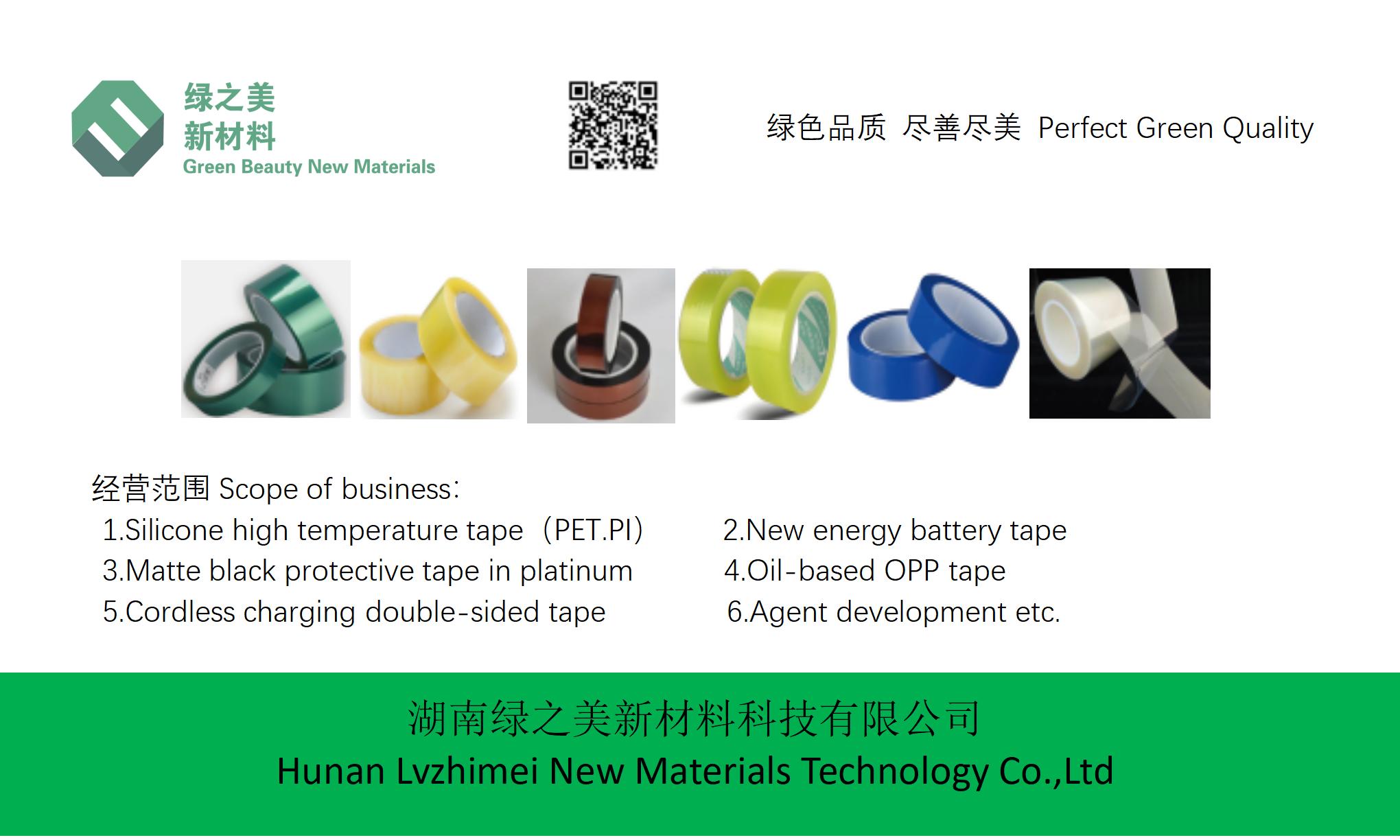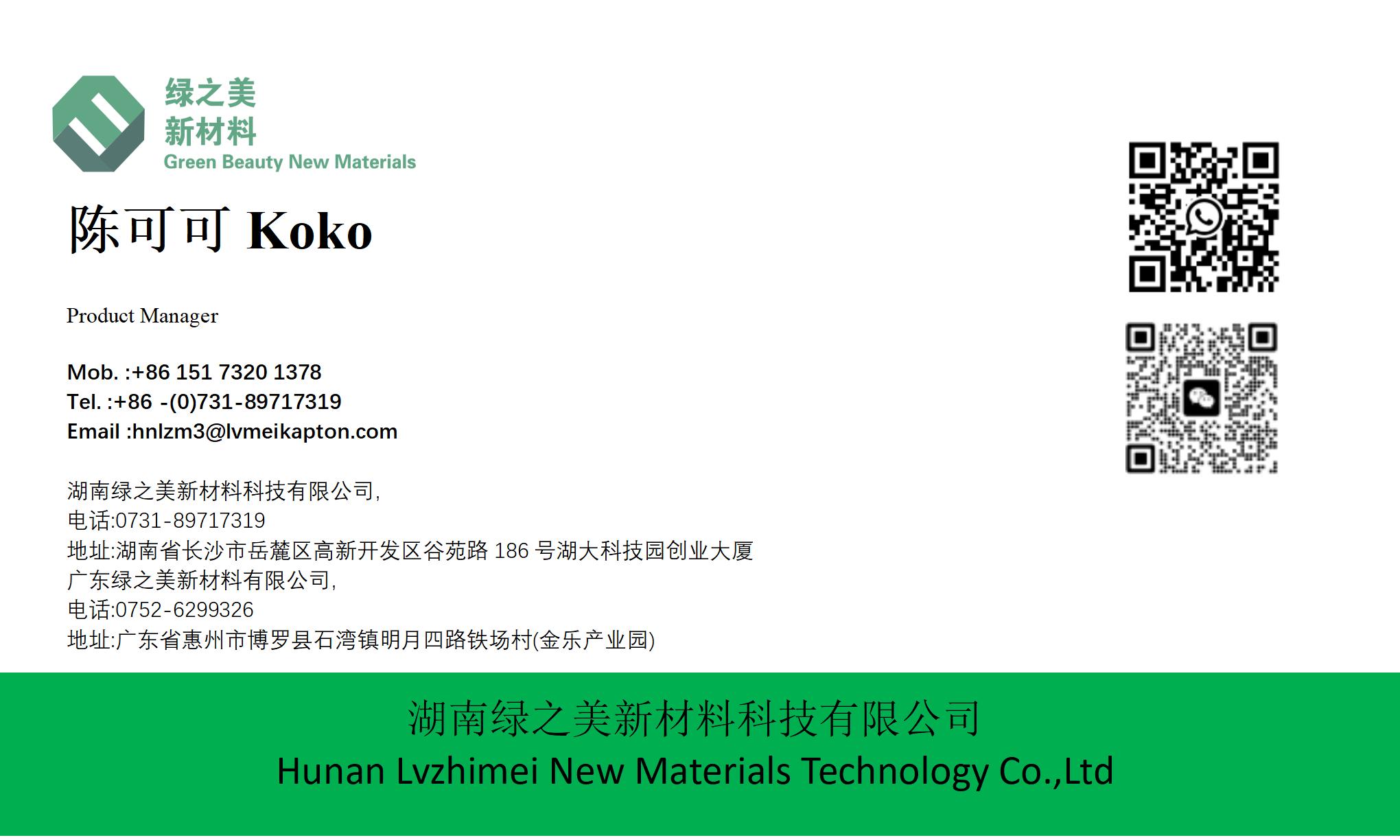hnlzm@lvmeikapton.com
+86 13787123465


Hunan Lvzhimei New Material Technology Co., Ltd.


NameDescriptionContent
How to Design Fire-Resistant Battery Modules with LVMEIKAPTON Insulating Electrical Tape? |https://www.lvmeikapton.com/
Source:
|
Author:Koko Chan
|
Published time: 2025-04-18
|
1 Views
|
Share:
The safety of battery modules, particularly in electric vehicles and energy storage systems, is a paramount concern. Thermal runaway events, leading to fires and explosions, pose significant risks. To mitigate these risks, engineers must design robust battery pack systems that incorporate advanced materials and innovative designs. This article explores how LVMEIKAPTON insulating electrical tape, a high-performance PI material, can be integrated into battery module designs to enhance fire resistance, electrical insulation, and structural integrity.


How to Design Fire-Resistant Battery Modules with LVMEIKAPTON Insulating Electrical Tape
IntroductionThe safety of battery modules, particularly in electric vehicles and energy storage systems, is a paramount concern. Thermal runaway events, leading to fires and explosions, pose significant risks. To mitigate these risks, engineers must design robust battery pack systems that incorporate advanced materials and innovative designs. This article explores how LVMEIKAPTON insulating electrical tape, a high-performance PI material, can be integrated into battery module designs to enhance fire resistance, electrical insulation, and structural integrity.
The Role of LVMEIKAPTON Insulating Electrical TapeLVMEIKAPTON insulating electrical tape is a critical component in battery module design. Made from polyimide (PI) film, this tape offers exceptional properties that make it ideal for high-voltage and high-temperature applications. Key features include:
1.
High-Temperature Resistance: LVMEIKAPTON tape withstands temperatures up to 300°C (PI material high temperature resistant 300 tape), ensuring stability during thermal runaway events.
1.
Electrical Insulation: Its H-class insulation (up to 6000 KV) prevents electrical arcing and short circuits, crucial for battery pack safety.
1.
Fire Retardancy: The tape’s inherent flame resistance and low smoke emission characteristics help contain fires.
1.
Mechanical Strength: Excellent tensile strength (20 kg/25mm) and adhesion (585 g/25mm) ensure structural stability.
Designing a Multi-Layer Tape System for Fire ResistanceTo achieve optimal fire resistance, a multi-layer tape system combining insulation, fire retardancy, and structural reinforcement is essential. The following design approach addresses key safety challenges:
Layer 1: Electrical InsulationLVMEIKAPTON tape serves as the primary insulation layer. Its PI film substrate provides dielectric strength, preventing short circuits between battery cells and modules. The tape’s silicone adhesive ensures strong adhesion to various substrates, including metals, plastics, and ceramics. For enhanced safety, double-layer insulation can be applied in critical areas.
Layer 2: Fire Retardant BarrierA secondary layer of LVMEIKAPTON PI material high temperature resistant 300 tape with flame-retardant additives is added. This layer delays flame propagation by creating a thermal barrier. When exposed to heat, the tape chars rather than burns, slowing down the spread of fire. In tests, this layer has demonstrated the ability to delay fire蔓延 by up to 8 minutes compared to conventional designs, meeting GB/T 31467.3 thermal runaway requirements.
Layer 3: Structural ReinforcementA third layer of high-strength PI tape reinforces mechanical stability. This layer prevents cell displacement during thermal expansion or mechanical shock, reducing the risk of cell-to-cell contact and subsequent short circuits. The tape’s flexibility allows it to conform to irregular cell shapes, ensuring comprehensive coverage.
Key Design Considerations
1.
Cell-to-Cell Spacing: Ensure adequate spacing between cells to allow for thermal expansion and minimize heat accumulation. LVMEIKAPTON tape’s thin profile (0.03-0.3mm customizable thickness) enables efficient use of limited pack space.
1.
Edge Protection: Wrap tape around cell edges to prevent insulation degradation from mechanical abrasion.
1.
Thermal Interface Management: Use tape with high thermal conductivity (optional variants) to dissipate heat away from critical components.
Meeting GB/T 31467.3 Thermal Runaway TestingGB/T 31467.3 mandates stringent testing for battery thermal safety. Design validation requires:
●
Heating Rate Simulation: Subject the battery module to a controlled heating rate (e.g., 5°C/min) until thermal runaway occurs.
●
Fire Propagation Assessment: Evaluate the tape system’s ability to delay火焰 spread beyond the initial failure cell.
LVMEIKAPTON tape’s multi-layer design has been proven to meet these criteria through the following mechanisms:
●
Thermal Insulation: The PI film and silicone adhesive layers reduce heat transfer to adjacent cells.
●
Flame Retardancy: The char layer acts as a barrier, limiting oxygen access and slowing combustion.
●
Structural Integrity: Reinforced mechanical strength prevents cell deformation and separation during thermal events.
Table: Comparative Performance of LVMEIKAPTON Tape vs. Conventional Materials
Property | LVMEIKAPTON Tape | Conventional Tape |
Max Temperature Resistance | 300°C (short-term) | 150°C |
Flame Retardancy Rating | V-0 (UL 94) | HB |
GB/T 31467.3 Compliance | Pass | Fail |
Delayed Fire Spread | +8 minutes | +2 minutes |
Application in Battery Module AssemblyLVMEIKAPTON tape simplifies battery pack assembly while enhancing safety:
1.
Cell Wrapping: Wrap tape around individual cells to isolate them electrically and thermally.
2.
Busbar Insulation: Use tape to insulate high-current busbars, preventing arcing.
3.
Module Encapsulation: Apply tape as a final layer over assembled modules for added protection.
Case Study: Electric Vehicle Battery Pack DesignA leading EV manufacturer integrated LVMEIKAPTON tape into its battery pack design. The multi-layer system:
●
Passed GB/T 31467.3 testing with an 8-minute fire delay.
●
Reduced pack weight by 15% compared to traditional ceramic insulation.
●
Enabled a 30% increase in energy density through optimized cell packing.
Maintenance and DurabilityLVMEIKAPTON tape’s durability ensures long-term performance:
●
Chemical Resistance: Resistant to acids, alkalis, and solvents, ideal for automotive and industrial environments.
●
UV Stability: Outdoor exposure testing confirms resistance to degradation.
●
Service Life: Designed to maintain properties for over 10 years under normal operating conditions.
ConclusionDesigning fire-resistant battery modules requires a holistic approach that combines advanced materials, engineering innovation, and rigorous testing. LVMEIKAPTON insulating electrical tape, with its PI material high temperature resistant 300 tape properties, enables engineers to create battery packs that meet stringent safety standards while optimizing performance and cost. By adopting a multi-layer tape system design, battery systems can delay thermal runaway propagation, significantly enhancing passenger and infrastructure safety.



Hunan Lvzhimei New Material Technology Co., Ltd.
Quick Links
Product Categories
© 2024 Hunan Lvzhimei New Material Technology Co., Ltd.All Rights Reserved. Designed by Erge
0731 - 89717319
hnlzm@lvmeikapton.com
+86 13787123465
Room 502, Chuangye Building, No186, Guyuan Road, High-Tech District, Changsha, Hunan, China
CONTACT



